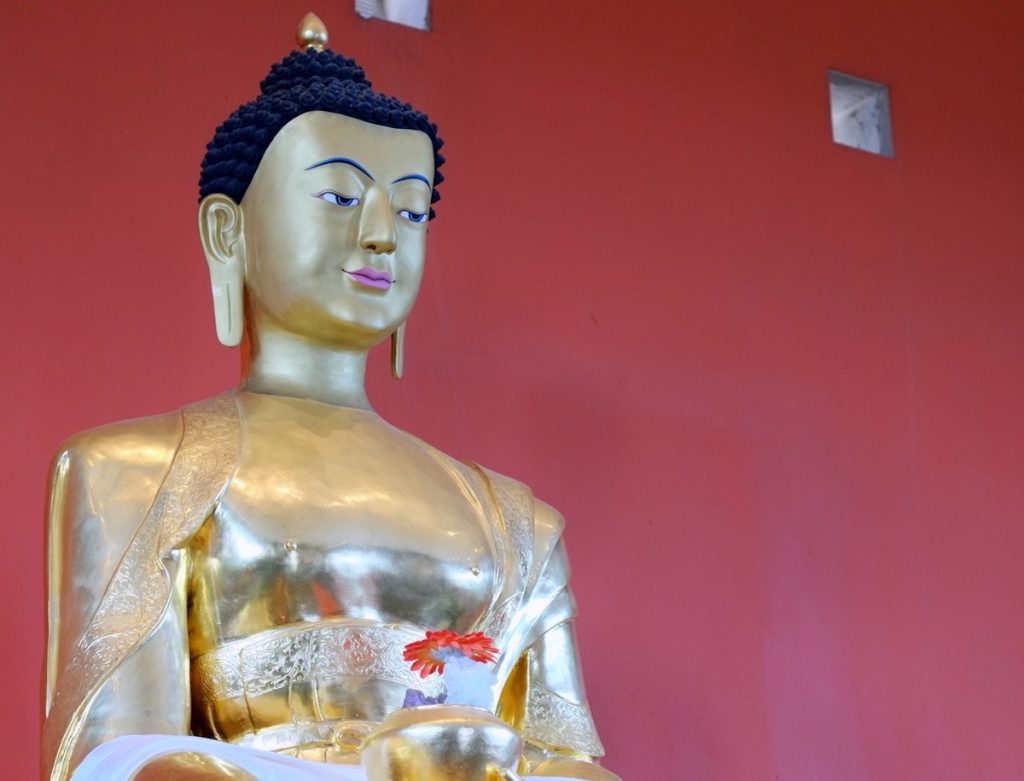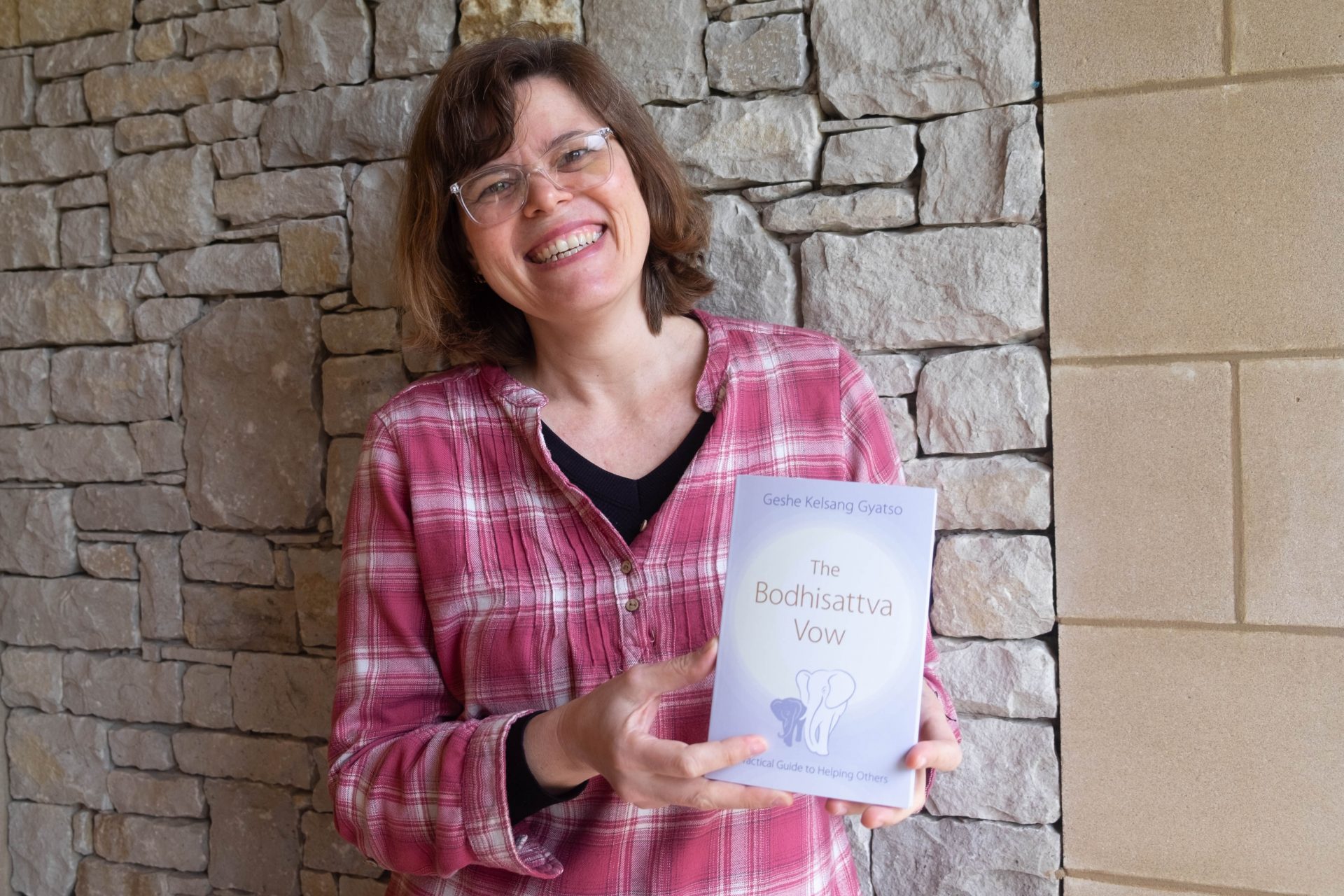Living with Intention
Dharma teacher Lama Aria Drolma on how to reorient our perpetual decision-making tendencies to cultivate a more purposeful life The post Living with Intention appeared first on Tricycle: The Buddhist Review.

Dharma teacher Lama Aria Drolma on how to reorient our perpetual decision-making tendencies to cultivate a more purposeful life
By Lama Aria Drolma Sep 13, 2024 Photo by PhotoLanda I https://www.flickr.com/photos/landahlauts/
Photo by PhotoLanda I https://www.flickr.com/photos/landahlauts/In the Dhammapada, a collection of sayings of the Buddha in verse form and one of the most widely read and best-known Buddhist scriptures, the Buddha addresses the nature of the mind. From Gil Fronsdal’s 2006 translation:
The mind, hard to control,
Flighty—alighting where it wishes—
One does well to tame.
The disciplined mind brings happiness.
This verse encapsulates the essence of Buddhist thought on the idea of mental discipline. The mind, inherently restless and prone to distraction, requires diligent effort to observe, restrain, and transform. The mind races in our waking hours, creates worlds in our dream states, and even continues, ceaselessly, during dreamless sleep. Yet when the mind is properly trained and disciplined, it can be brought to stillness, becoming a source of lasting happiness and well-being.
Part of this mind-training can be accomplished through bringing more intentionality to our lives. The theme of living intentionally is central to many Buddhist teachings, where intention is fostered through cultivating mindfulness, awareness, and purposeful action in every moment.
Here are five key teachings on intentionality from the Pali canon that can be applied in our everyday lives.
1. Mindfulness (Pali: sati)
The “heart of intentional living,” mindfulness is the practice of being fully present in every moment, observing our thoughts, feelings, and actions in such a manner as to not identify with them, and, in the process, cultivating skillful mind states and abandoning unskillful ones. According to the Satipatthana Sutta, mindfulness is the direct path to purification and liberation. Living intentionally begins with cultivating mindful awareness, allowing us to become aware of our intentions, decisions, and the impact of our actions on ourselves and on others.
By practicing mindfulness in daily activities—whether practicing mindful eating, walking meditation, or interacting with others with mindful awareness—we learn to act with greater intentionality and purpose.
2. Right Intention (Pali: samma sankappa)
Right Intention, as articulated in the noble eightfold path, emphasizes the importance of intentions grounded in nonharming, compassion, and renunciation of attachment. It encourages individuals to act with a clear and virtuous purpose, steering away from and abandoning thoughts and actions driven by greed, hatred, and delusion, otherwise known as the three poisons.
To live intentionally, we must continually align our actions with wholesome intentions. In practice, this can look like stopping before we act and reflecting on the nature of why we are acting in that way. Reflecting on one’s motivations before acting ensures that life is lived in accordance with ethical principles, leading to both increased personal as well as collective well-being.
3. Karma and Intentionality
In Buddhism, karma (Pali: kamma) refers to the intentional actions that shape our future experiences. Think of it as the law of cause and effect. The Buddha taught that our actions—rooted in intention—create our reality. As stated in the Dhammapada:
“Mind precedes all mental states. Mind is their chief; they are all mind-wrought. If with an impure mind a person speaks or acts, suffering follows him like the wheel that follows the foot of the ox…. If with a pure mind a person speaks or acts, happiness follows him like his never-departing shadow.”
Understanding the law of karma inspires individuals to act with conscious intent, knowing that their choices have far-reaching consequences. By practicing generosity, compassion, and wisdom, one can create positive outcomes for themselves and others, now and in the future.
4. Cultivating Virtuous Habits (Pali: bhavana)
Bhavana, or mental cultivation, involves developing positive mental states through practices such as meditation, studying the dharma, and ethical conduct. The Buddha emphasized the importance of training the mind to overcome negative habits and cultivate virtues like the four boundless states, or brahma-viharas, which include loving-kindness (Pali: metta), compassion (Pali: karuna), equanimity (Pali: upekkha), and sympathetic joy (Pali: mudita).
Living intentionally involves a commitment to regular practice, where one consciously develops virtues that support a meaningful and balanced life. A daily cultivation of simply remembering or recalling these brahma-viharas strengthens our resolve to live according to our highest values and aspirations.
5. Nonattachment
The Buddhist concept of impermanence (Pali: anicca) teaches that all conditioned things are transient. Recognizing the impermanent nature of life encourages us to live with purpose, focusing on what truly matters—spiritual growth, compassion, and service to others—rather than clinging to fleeting desires.
By embracing impermanence, one learns to prioritize actions that lead to lasting fulfillment and contribute to the well-being of others. This perspective helps us to detach from trivial pursuits and align our lives with deeper, more intentional goals.
Living with intention, from a Buddhist perspective, is about integrating mindfulness, ethical conduct, and mental cultivation into every aspect of our lives. It’s about acting with clear and virtuous intentions, understanding the impact of our actions through the law of karma, and living with a purpose that transcends the impermanent nature of our worldly existence. By following these teachings, one can lead a life that is not only intentional but also aligned with the path to liberation and true happiness.
![]()
Thank you for subscribing to Tricycle! As a nonprofit, we depend on readers like you to keep Buddhist teachings and practices widely available.
This article is only for Subscribers!
Subscribe now to read this article and get immediate access to everything else.
Already a subscriber? Log in.

 Kass
Kass 
































